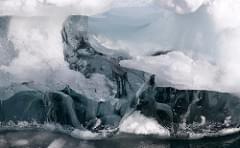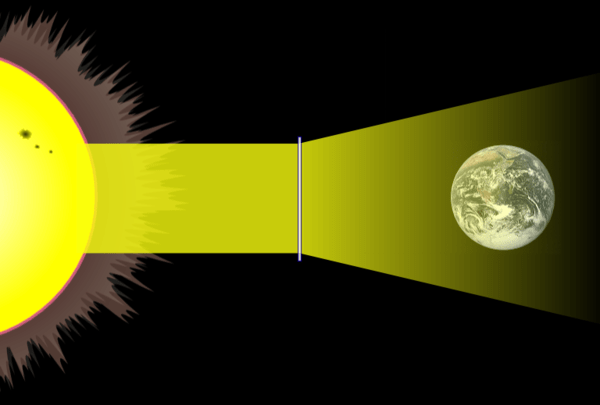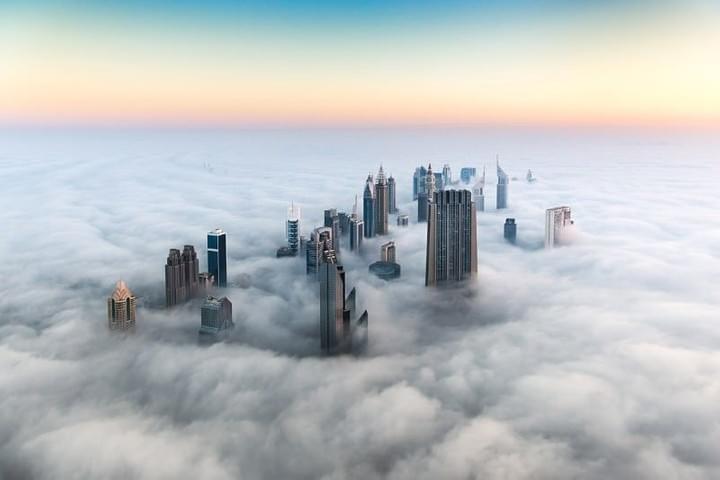
Climate Intervention
AKA geoengineering, SRM: solar radiation management.
Is defined as purposeful actions intended to produce a targeted change in some aspect of the climate; includes actions designed to remove carbon dioxide or other greenhouse gases from the atmosphere or to change Earth’s radiation balance (referred to as “albedo modification”), but not efforts to limit emissions of greenhouse gases (i.e., climate mitigation). -- Climate Intervention: Reflecting Sunlight to Cool Earth. National Academies Press. ISBN 978-0-309-31482-4.
Cloud Brightening
Clouds reflect solar radiation (sunlight) back to space, producing cooling effects locally, and on the planet. The reflectivity of clouds increases as the number of water droplets inside the cloud increases and their size decreases, making the clouds brighter and longer lasting, reflecting sunlight and increasing cooling.
Marine Cloud Brightening Project - mcbproject.org
FAQ
STEP 1: Get Educated - STEP 2: Save the Planet

SAVING GREENLAND
WHY GREENLAND? WHY NOT MITIGATE WARMING?
Although some of the prospects look good for moving away from coal, time is key. Can we close coal-fired power plants fast enough to save the Greenland ice sheet? To me, saving Greenland is both a metaphor and pre-condition for saving civilization. If the ice sheet melts, the sea will rise 23 feet. Hundreds of coastal cities will be abandoned. The rice-growing delta of Asia will be under water. And there will be hundreds of millions of rising-sea refugees. The work that comes to mind is chaos. If we cannot mobilize to save the Greenland ice sheet, we probably cannot save civilization as we know it.
Lester Brown, World on the Edge, p.193.

EFFICIENCY
BUT WON'T CARBON TAXES AND PRICE RISES TAKE CARE OF US?
A myth about the market economy is that it is the most efficient method of production. But the "efficient" market economy becomes highly inefficient when the destruction of nature's economy is taken into account.
Vandana Shiva, Earth Democracy, p.32.

SPACE SUNSHADE
WHAT ABOUT SOME KIND OF IN-SPACE SOLUTION?
Several authors have proposed dispersing light before it reaches the Earth by putting a very large lens in space, perhaps at the L1 point between the Earth and the Sun. This plan was proposed in 1989 by J. T. Early.
In 2004, physicist and science fiction author Gregory Benford calculated that a concave rotating Fresnel lens 1000 kilometres across, yet only a few millimeters thick, floating in space at the L1 point, would reduce the solar energy reaching the Earth by approximately 0.5% to 1%.
The cost of such a lens has been disputed. At a science fiction convention in 2004, Benford estimated that it would cost about US $10 billion up front, and another $10 billion in supportive cost during its lifespan.
EARTH OVER BUDGET
WHAT ROLE DOES HUMAN ACTIVITY PLAY?
Since the start of the industrial revolution in the late 1700s, humans have increasingly burned fossil fuels to create heat and electricity and to power vehicles and factories. Fossil fuels, such as coal, oil, and natural gas, emit greenhouse gases, especially carbon dioxide, as they combust. Greenhouse gases, which also include methane and water vapor, warm Earth's atmosphere by absorbing and trapping outgoing radiation from the Earth and reradiating some of this energy back to the surface.
The amount, or concentration, of CO2 gas in the atmosphere has risen more than 40 percent since the industrial revolution. CO2 concentration in the atmosphere is now at its highest point in the last 800,000 years. Each year, the CO2 concentration increases by about 0.5 percent.
Despite the normal variability of Earth's climate, which includes periods of natural warming and cooling, scientists now expect that the greenhouse gases added to the atmosphere from human activity will cause the overall temperature trend to continue increasing.

HACKING THE CLIMATE
SO HOW DOES GEOENGINEERING WORK?
Stanford geoengineering expert Ken Caldeira first heard the concept broached during a climate summit in 1998, by astrophysicist Lowell Wood. “His idea was to offset the effects of increased greenhouse gas concentrations by reflecting some of the sun's warming rays back to space,” Caldeira remembers. “And I thought that this would make no sense and wouldn’t work…And we came back and did some computer model simulations using climate models. It turned out, much to our surprise, that it worked quite well!”
Jane Long co-chairs the Task Force on Geoengineering at the Bipartisan Policy Center. She explains that the panel was formed at the request of the US government, “because they wanted to hear from scientists about whether or not this was a good idea…and lo and behold, it wasn't just scientists actually. We had people that were diplomats. We had political scientists. We had ethicists on this panel.” The unanimous conclusion, she reports, was “that we needed to start looking into this technology.”
Physicist Armand Neukermans is part of a team that has been exploring what he calls “marine cloud brightening,” based on an idea by atmospheric scientist John Latham.
Adding water droplets to clouds makes them brighter, Neukermans explains, enabling them to reflect more light. “The idea is that if you would help by a natural means to bring more droplets in there, nuclei as they call it, they will become droplets too. The clouds will lighten…this is a relatively simple idea that basically uses the clouds like a mirror.”
SIGN UP TODAY
Launching soon. Tell us why you're ready to save the planet.
© 2021




